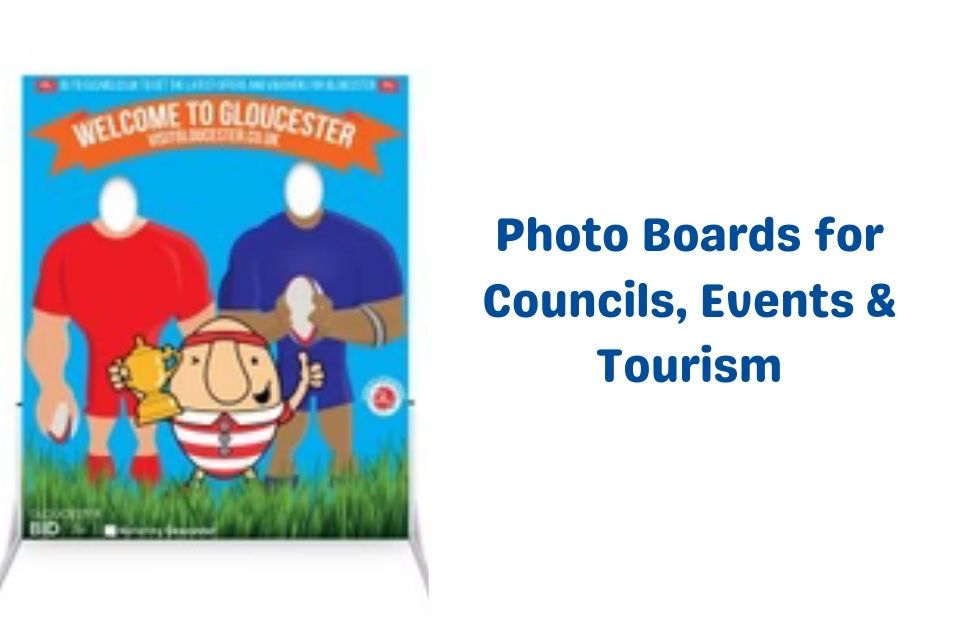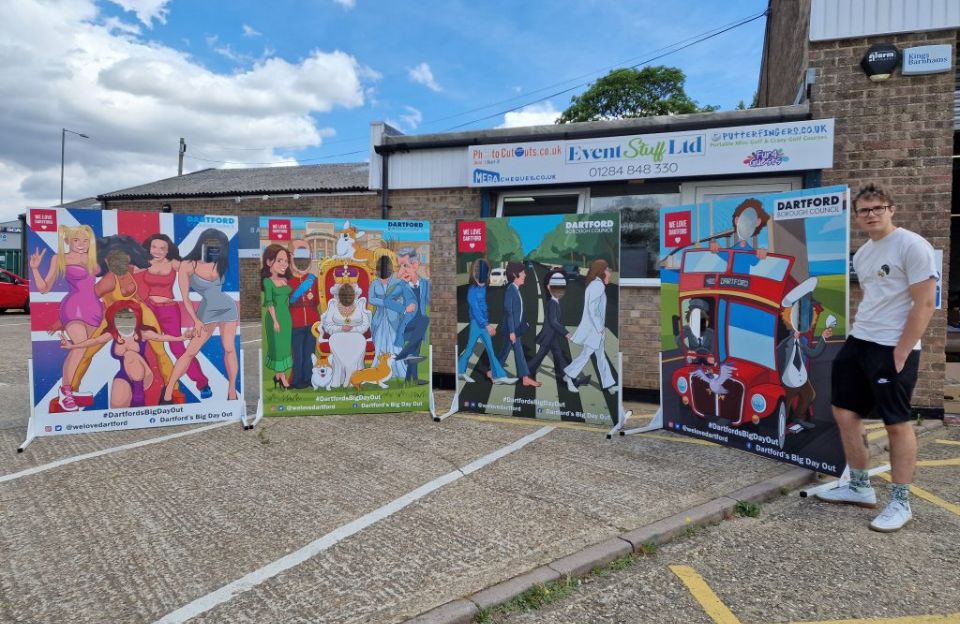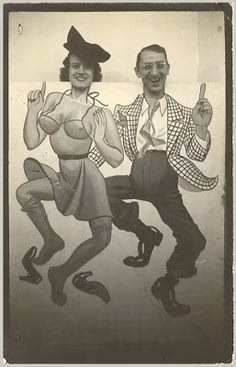
Face-in-hole boards are a Great British seaside tradition – but where did they actually originate? Surely they started in English Victorian times during the great bathing hut and donkey ride epoch? Not so fast.
Our brains seem to be hard-wired to find it funny when a disembodied head becomes part of a fictional scene. The first time a cave dweller put their face through a hole in an animal skin to amuse the children, the first face-in-hole was born. Sadly there weren’t any cameras then, and cave paintings mostly depict hunting rather than heartwarming domestic scenes.
What more can we say? Well, some seem to think they might have an extraterrestrial origin:
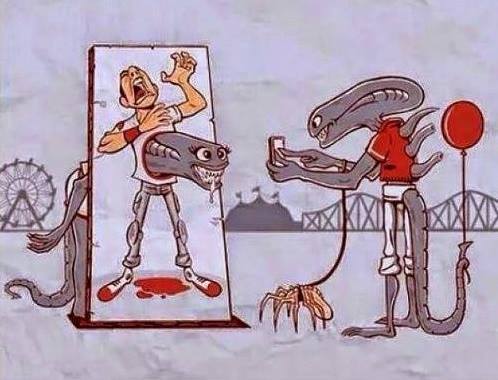
We need to look to more recent times, and preferably here on Earth, to find any documented evidence.
Some theorise that the whole ‘disembodied head’ thing is linked to the French Revolution and the horrified response it got from across the Channel in the cartoons of James Gilray.
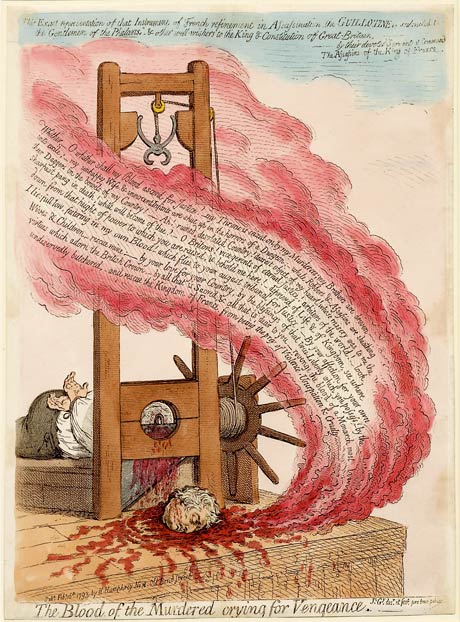
The theory goes that this spirit of social justice somehow morphed into a game called ‘The Clothes Make The Man’, which first appeared around 1820. In the game, a series of drawn figures wear clothes typical of various levels of contemporary society, from the street beggar to the King. The faces are cut out and can be changed around. The infotainment value lay in seeing how the same face topping a figure clad in rags, and a figure clad in robes, was perceived according to the attire. Faces in holes thus became a form of social satire.
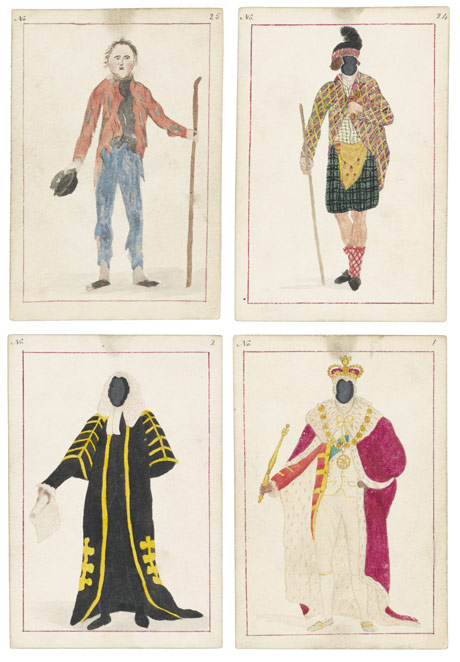
Perhaps this was the beginning of the humorous, satirical, fun-poking spirit of what we now know as face in hole boards.
One strong contender for the ‘invention’ of face in hole boards in their modern fairground/carnivalesque context was Cassius Marcellus Coolidge. An American artist born in 1844, he is famous for his paintings of dogs playing poker.
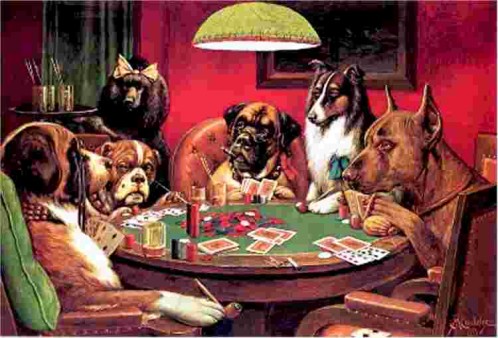
In 1874 Coolidge was granted a patent for ‘…producing caricature photographic pictures by means of a board or card of stiff material having a miniature body or other design thereon, the same being held up close to the person or subject to be photographed, arranged so as to represent a complete, although disproportioned, figure.’

So the first boards to be commercialised were not quite face-in-hole, but face-above-comically-small-body. Coolidge then expanded his business to include bigger scenes such as this, which were face-in-hole, although it’s hard to see the join here:
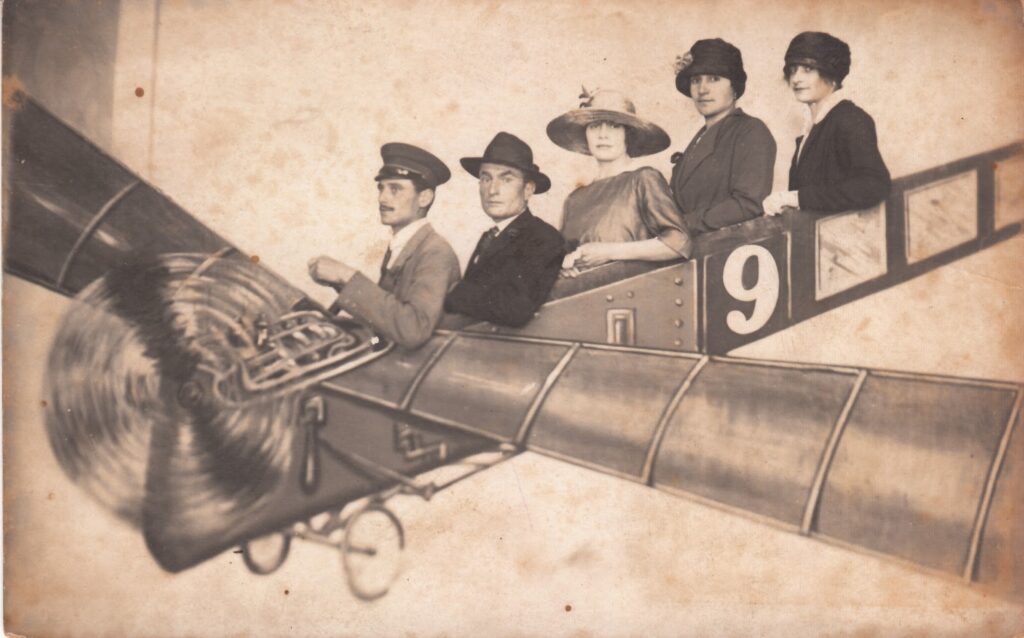
Coolidge marketed them with the tagline “Now is the time to order Coolidge’s comic foregrounds for making holiday post cards!”
And it is with postcards that we finally arrive at the British seaside. We, the British, took the fun, silly spirit of earlier cutout ideas and turned it into a bawdy festival of littoral lechery. The undisputed king of seaside oo-errr was Donald McGill. Quite a lot of his output was banned by the guardians of public decency, including these:
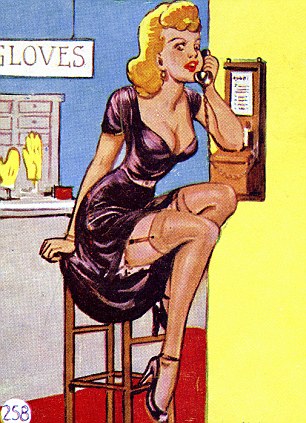
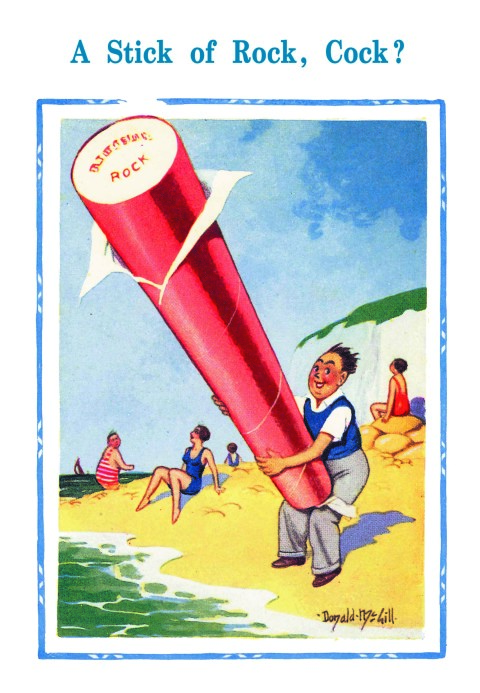
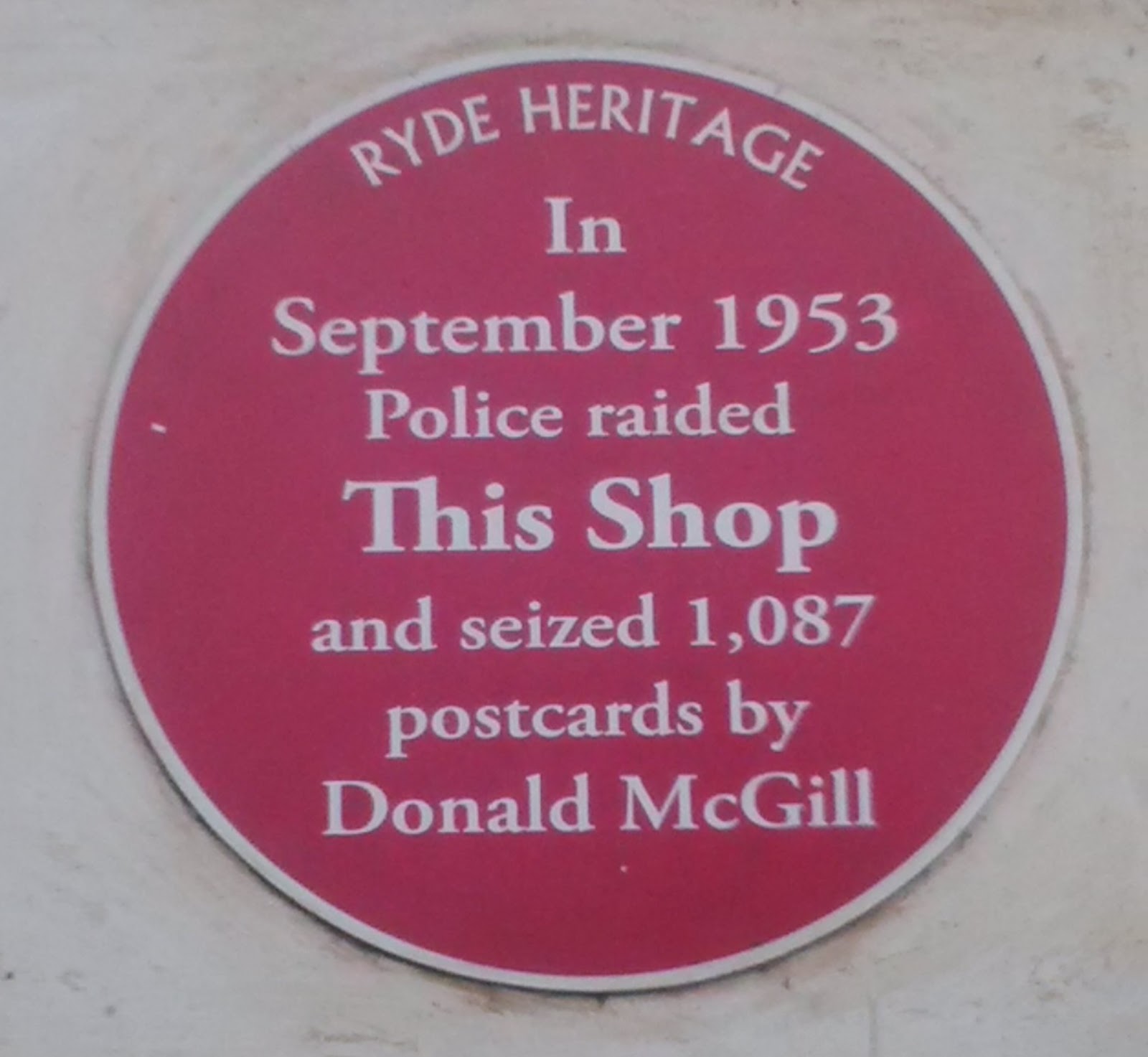
It’s all down to swimsuits, really. Once the Victorians had got over themselves, British beaches became spotting grounds for the sweaty, balding man with binoculars McGill seemed to think lived inside each one of us. The promise of a trip to the seaside, for bored fathers, lay in the glimpses of thigh and boob to be had while pretending to study shipping through the goggle glasses. It was a huge attraction. Now you could have skimpy with your scampi.
British cutout boards sprang from this saucy genre when they were blown up to life-size and had face holes cut in them to create the ultimate interactive alter-egos. Not only could you escape to the seaside, you could escape from your own body by substituting it with another, set in a cartoon world of bright colours and hedonism. Arguably an early form of virtual reality, it was good for business, attracting more families to the edges of the country so they could buy industrial amounts of rock and cockles – and ogle at everyone’s wobbly bits.
We’ve seen some American and British origins of face-in-hole boards. But are they solely an anglophone phenomenon?
Not on your nelly. In Japan face-in-hole boards are used prolifically as marketing tools, and are also considered an art form. It is called ‘Kaohame’ in Japanese, which means ‘insert face’. One notable proponent whom we have posted about is Tomoyuki Shioya, who has made it his mission in life to travel Japan sticking his face in any board he can find and recording the event. At the time of writing this, he has done over 2,400 boards and is showing no sign of slowing down.
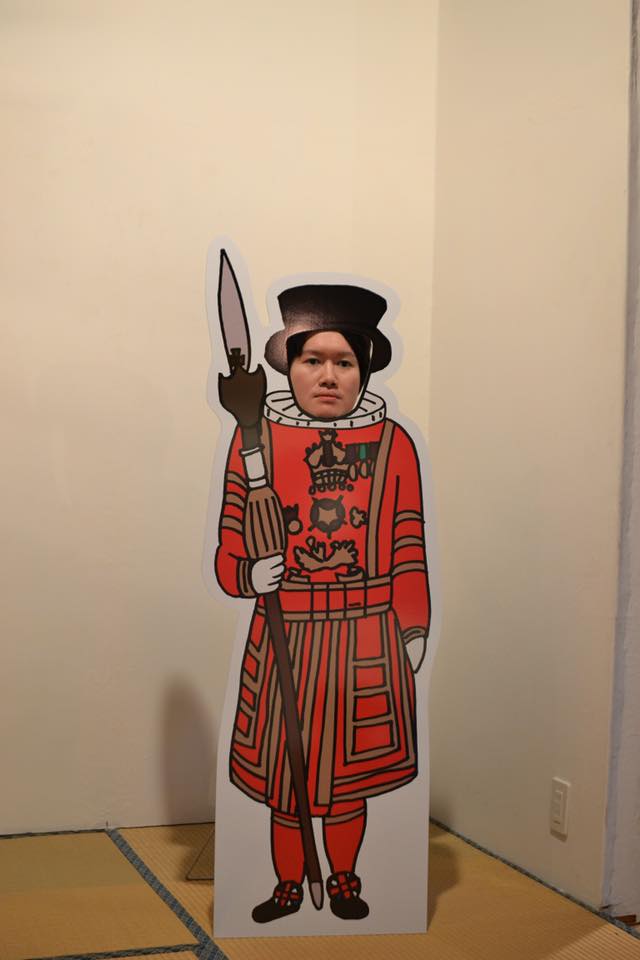
He’s clearly a nutter, but a good sort of nutter, and we have nothing but admiration for him. He takes it seriously enough never to smile, but always to have a neutral expression – to ‘give the boards the respect they deserve.’ Rock on, Tomoyuki!
The French call face-in-hole boards ‘Tintamarresques’. Maybe they got the idea from us – the English Channel is narrow enough, after all. ‘Tintamarre’ in French means ‘a din, a cacophony, a raucous sound’. It also applies to a form of caricature not a million miles from that of James Gilray. Its most famous proponent was Touchatout, who wrote a comic history of France with illustrations like this:
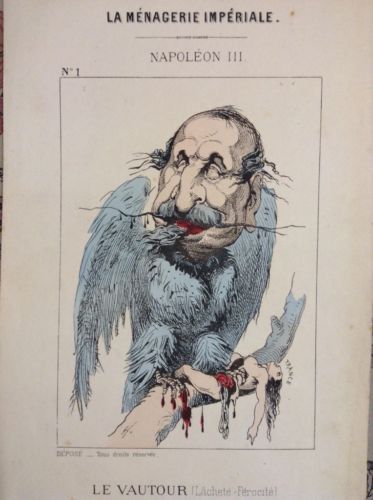
At around the turn of the last century, a Swedish folk comedian named Calle Lindström used a practice that was apparently common in Swedish variety hall entertainment: the tintamarresque theatre. Basically he would poke his head through a painted scene and do a routine like that for giggles. His natural comic talent made him hugely popular.
The Russians have their own version, which they call ‘Tantamareska.’ Here’s a YouTube video of a Tantamareska event.
Most countries probably have some version of face-in-the hole boards. They are universally considered amusing and are used to attract attention at events, for marketing purposes or for simple photo fun. We’d like to leave the last word on the subject to Walter Knott, an American entrepreneur who in 1930s California created a theme park featuring, among much else, face-in-hole boards:
“You’ll never know how good you look, until ya gits yer pitchur took.”
Face in Hole Boards by Photocutouts.co.uk
Photocutouts.co.uk is the UK’s premier maker of face in hole boards for product launches, tourism, marketing, charity fundraising, children’s events, sports events, exhibitions and trade shows, parties and weddings. We have made them for many leading brands, charities and organisations. They work because the concept just never gets old. They create a perfect focus and photo opportunity for brands big and small. Or just for fun at parties and weddings!
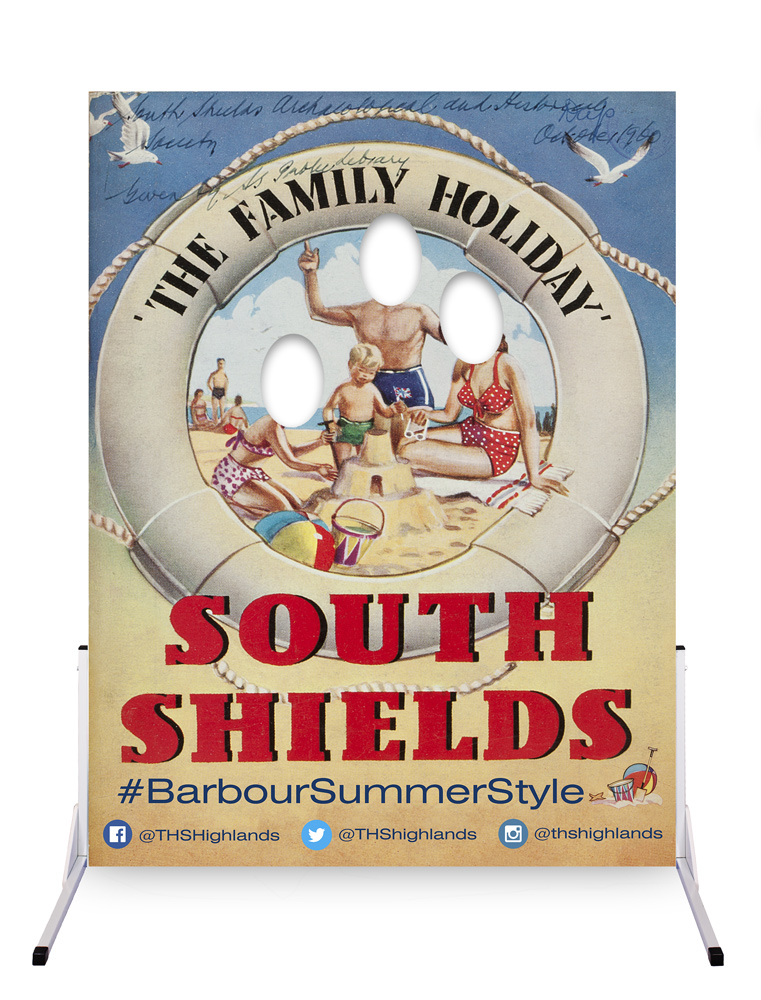
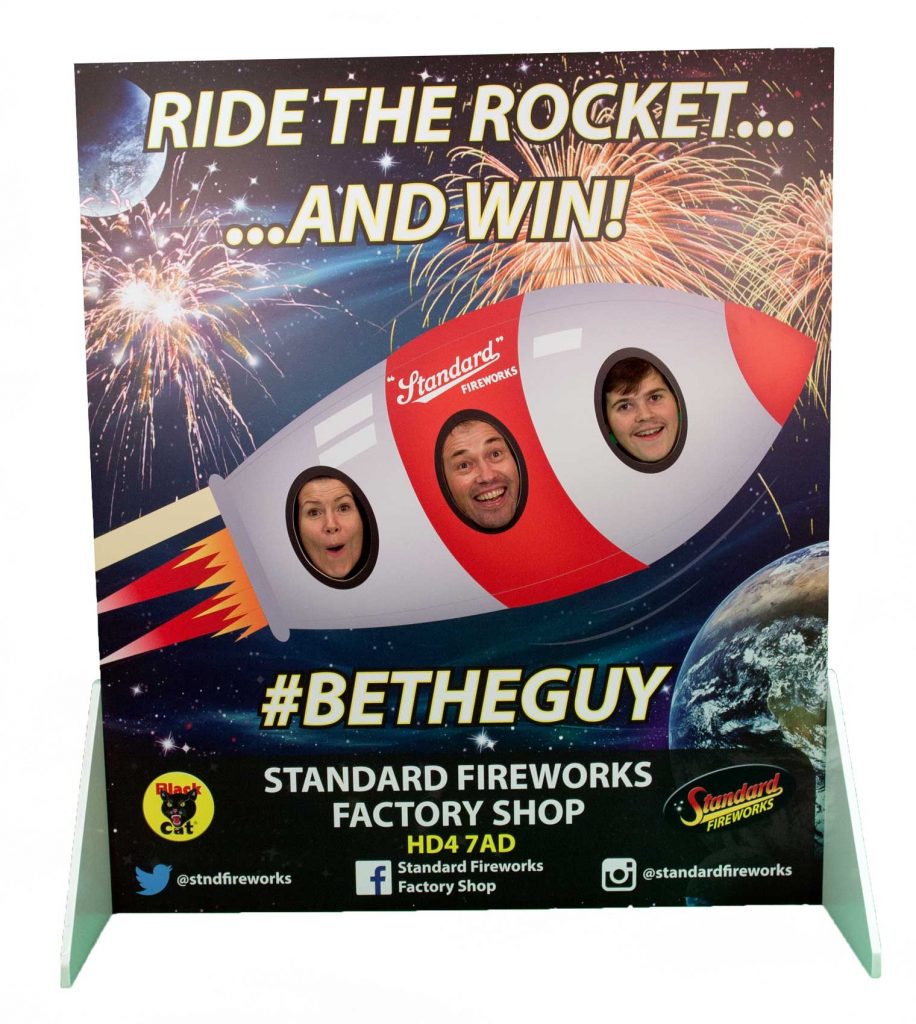
For bespoke face in hole boards contact us on 01842 337 100, email us or visit our site to see the latest designs!
